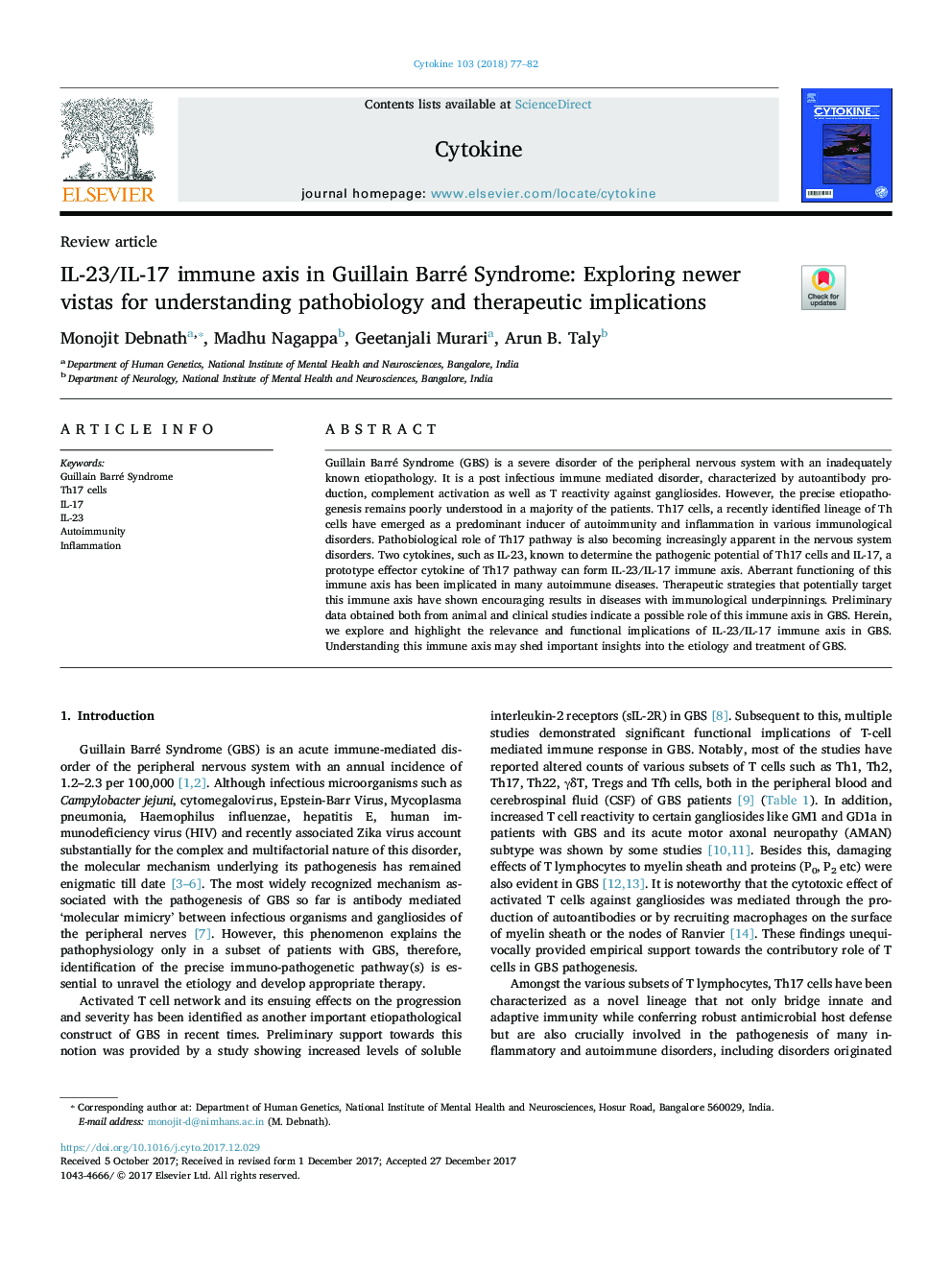| Article ID | Journal | Published Year | Pages | File Type |
|---|---|---|---|---|
| 8629149 | Cytokine | 2018 | 6 Pages |
Abstract
Guillain Barré Syndrome (GBS) is a severe disorder of the peripheral nervous system with an inadequately known etiopathology. It is a post infectious immune mediated disorder, characterized by autoantibody production, complement activation as well as T reactivity against gangliosides. However, the precise etiopathogenesis remains poorly understood in a majority of the patients. Th17 cells, a recently identified lineage of Th cells have emerged as a predominant inducer of autoimmunity and inflammation in various immunological disorders. Pathobiological role of Th17 pathway is also becoming increasingly apparent in the nervous system disorders. Two cytokines, such as IL-23, known to determine the pathogenic potential of Th17 cells and IL-17, a prototype effector cytokine of Th17 pathway can form IL-23/IL-17 immune axis. Aberrant functioning of this immune axis has been implicated in many autoimmune diseases. Therapeutic strategies that potentially target this immune axis have shown encouraging results in diseases with immunological underpinnings. Preliminary data obtained both from animal and clinical studies indicate a possible role of this immune axis in GBS. Herein, we explore and highlight the relevance and functional implications of IL-23/IL-17 immune axis in GBS. Understanding this immune axis may shed important insights into the etiology and treatment of GBS.
Related Topics
Life Sciences
Biochemistry, Genetics and Molecular Biology
Endocrinology
Authors
Monojit Debnath, Madhu Nagappa, Geetanjali Murari, Arun B. Taly,
